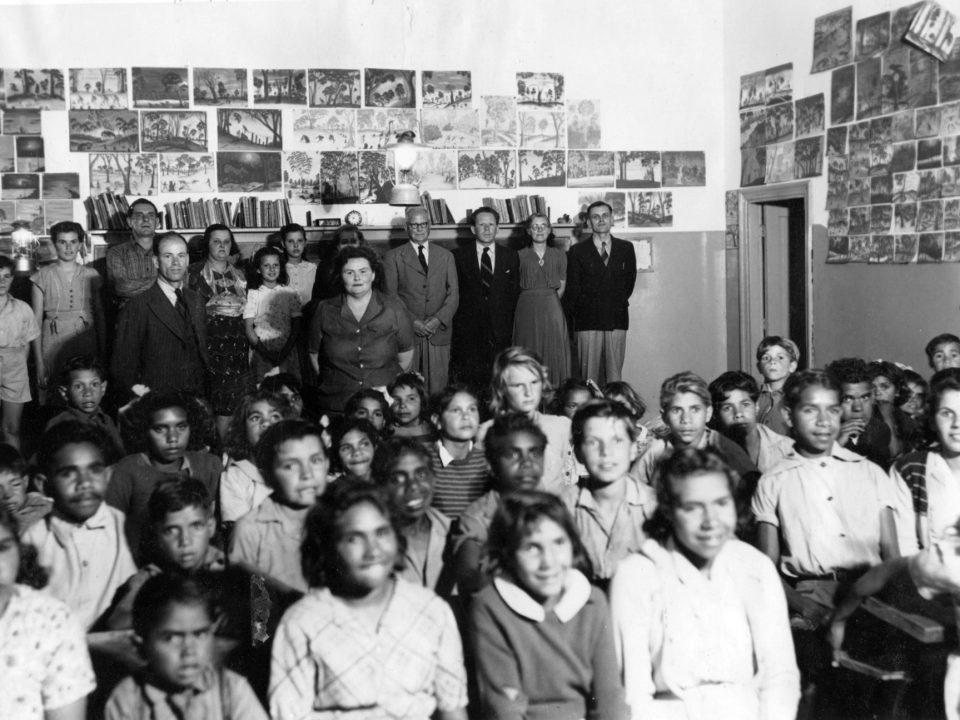In our forthcoming book Connection: Aboriginal Child Artists Captivate Europe, I have written two appendices, one reflecting on The Trauma and the other on The Healing. In my last blog, I provided a section of the first Appendix, The Trauma: Reflections. Here, I include the first part of the other Appendix, The Healing: Reflections.
‘The social and emotional wellbeing of many of the children at Carrolup School improved markedly during the time that Noel White was their teacher. What happened to create this change? Before addressing this question, I first describe briefly what some leading experts say about the healing of trauma.
1. Key elements underlying the healing of trauma
In her classic book Trauma and Recovery: The Aftermath of Violence – From Domestic Abuse to Political Terror, Judith Herman says:
‘The core experiences of psychological trauma are disempowerment and disconnection from others. Recovery, therefore, is based upon the empowerment of the survivor and the creation of new connections. Recovery can take place only within the context of relationships; it cannot occur in isolation. In her renewed connection with other people, the survivor re-creates the psychological faculties that were damaged or deformed by the traumatic experience. These faculties include the basic operations of trust, autonomy, initiative, competence, identity, and intimacy. Just as these capabilities are originally formed in relationships with other people, they must be reformed in such relationships.’ Judith Herman, Trauma and Recovery, p. 133
‘Trauma robs the victim of a sense of power and control; the guiding principle of recovery is to restore power and control. The first task of recovery is to establish the survivor’s safety. This task takes precedence over all others, for no therapeutic work can possibly succeed if safety has not been adequately secured…’ Judith Herman, Trauma and Recovery, p. 159
Judith Herman goes on to state that traumatised people feel unsafe in their bodies. They feel that their emotions and thinking are out of control. They also feel unsafe in relation to other people. These issues must be addressed.
Bessel van der Kolk also emphasises the importance of a feeling of safety for traumatised people:
‘Being able to feel safe with other people is probably the single most important aspect of mental health; safe connections are fundamental to meaningful and satisfying lives. Numerous studies of disaster response around the globe have shown that social support is the most powerful protection against being overwhelmed by stress and trauma.
Social support is not the same as merely being in the presence of others. The critical issue is reciprocity: being truly heard and seen by the people around us, feeling that we are held in someone else’s mind and heart. For our physiology to calm down, heal and grow we need a visceral feeling of safety. No doctor can write a prescription for friendship and love: These are complex and hard-earned capacities.’ Bessel van der Kolk, The Body Keeps the Score: Brain, Mind, and Body in the Healing of Trauma, p. 79
The words ‘relationships’, ‘connection(s)’ and ‘community’ crop up continually in the writings of trauma experts.
‘… recovery from trauma and neglect is also all about relationships—rebuilding trust, regaining confidence, returning to a sense of security and reconnecting to love… healing and recovery are impossible—even with the best medications and therapy in the world—without lasting connections to others. Indeed, at heart it is the relationship with the therapist, not primarily his or her methods or words of wisdom, that allows therapy to work. All the children who ultimately thrived following our treatment did so because of a strong social network that surrounded and supported them….’
What maltreated and traumatized children most need is a healthy community to buffer the pain, distress and loss caused by their earlier trauma. What works to heal them is anything that increases the number and quality of a child’s relationships. What helps is consistent, patient, repetitive loving care.’ Bruce D. Perry, M.D., Ph.D. and Maia Szalavitz, The Boy Who Was Raised as a Dog: And Other Stories from a Childhood Psychiatrist’s Notebook – What Traumatized Children Can Teach Us About Loss, Love and Healing, pp. 231 – 232′
The above section is from David Clark, with John Stanton, Connection: Aboriginal Child Artists Captivate Europe, 23rd June 2020. ©David Clark


